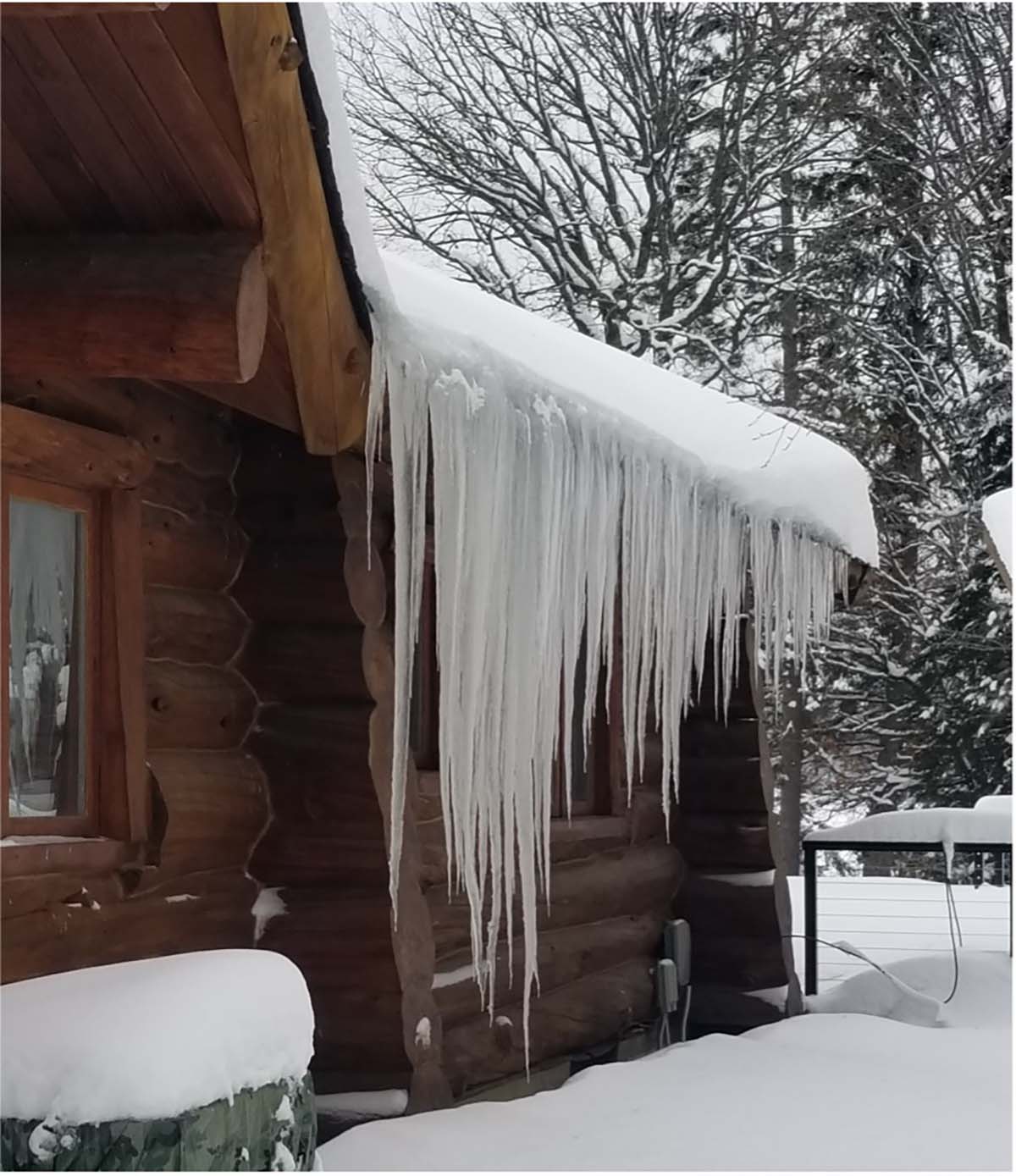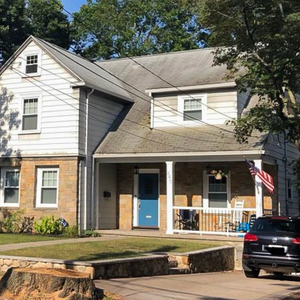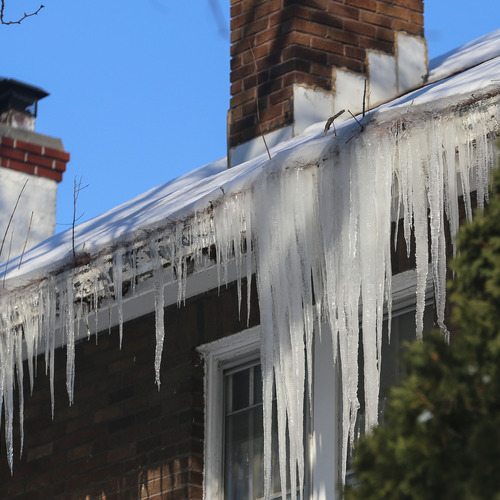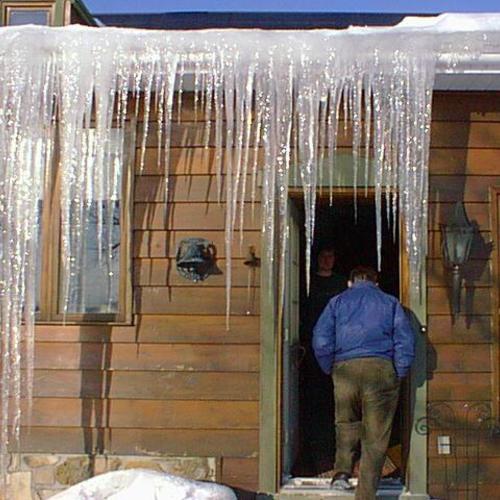
Image Credit: Jake Rabe
With the onset of another winter just a few months away, Jake Rabe is looking for suggestions on how to prevent the recurrence of ice dams on his older Ontario home.
“Each winter I have to deal with ice damming along two sides of the roof — nowhere else,” he writes in a Q&A post at Green Building Advisor. “The areas in question are a low-slope roof (3/12 pitch, east and west side of the ridge) and a cathedral style roof (8/12 pitch)… My goal is to stop the ice damming.”
Rabe believes that the house was built between the 1920s and the 1950s. Access to the cramped attic beneath the east and west low-slope roofs is through a tiny hatch on the upper floor of the house. Rabe estimates that there is only about 36 inches from the ridge to the attic floor, with the space now filled with a mix of old and new cellulose insulation roughly 12 inches thick. He has no idea whether the insulation is evenly distributed across the attic floor.
Soffit vents have been installed, although he suspects they have been obstructed by wood or cellulose. There are two exhaust vents at the top of the roof. The roof has board sheathing rather than OSB or plywood.
Rabe has solicited suggestions on how to resolve the problem from several roofing companies. They seem to run the gamut: opening all soffit vents and adding fluffy insulation between rafters; removing shingles and installing metal roofing; adding a new roof deck on top of the existing deck and building in an air gap between the two; removing all existing attic insulation before air-sealing the attic floor and blowing in new insulation; and, finally, removing the existing low-slope and cathedral roofs and replacing them with a new roof of a…
Weekly Newsletter
Get building science and energy efficiency advice, plus special offers, in your inbox.

This article is only available to GBA Prime Members
Sign up for a free trial and get instant access to this article as well as GBA’s complete library of premium articles and construction details.
Start Free TrialAlready a member? Log in















5 Comments
Sun
Does he mean two sides (i.e. west, south) or two parts (i.e. eaves)? If two sides, isn't it just a matter of the sun melting snow on those sides and not others? How would insulation stop the sun from melting the ice.?
De- icing cable.
Why not use de-icing electric cable? Zig Zag pattern applied on the exterior roof. About $100. Turn on manually. Common solution in Canada.
Responses to Meyer Brendan and Ven Sonata
Meyer,
Sun can contribute to ice dams, but if the ice dam is serious enough to concern a homeowner, it's almost always caused by heat flow from the interior.
Ven,
Electric-resistance cables are inexpensive, and they definitely melt ice. For that reason, the solution is common. But for energy nerds, this is a deeply dissatisfying solution -- solving a problem caused by heat leakage by increasing one's energy bills still further. Air sealing and R-value improvements are better, because they can solve ice dam problems while lowering a homeowner's energy bills.
That said, air sealing and R-value improvements usually cost more than $100 -- so I understand the attraction of the $100 solution.
cable sensors
Interesting, evidently the sensors controlling ice dam heating cables are pretty smart.
Ice Dams
I don't have a particular solution, but rather some thoughts, some of which have been touched on. I would stay away from a metal roof. I built a home at a ski resort in the BC Rockies, and the architectural guidelines mandated 3 peaks on each house. This means 6 valleys, and we put a metal roof on the house. I did a very good job of insulation and air sealing, all to no avail. Huge snow and a metal roof created ice dams like we never seen. Asphalt roofing fared MUCH better. But valleys are notorious for being difficult to insulate properly and a great breeding ground for ice dams.
Martin, from an energy point of view, fitting the house with a microFIT array (up to 10KW) of PV cells and heat tape is FAR cheaper (and more energy friendly) than a new roof.
But seriously, there are other issues, I would suggest. Is the house comfortable? Does the roof need replacing anyway? What is the downside to a few ice dams? How much insulation is up there now. $20-$30K for a new roof is a lot of moo-la.
Log in or become a member to post a comment.
Sign up Log in